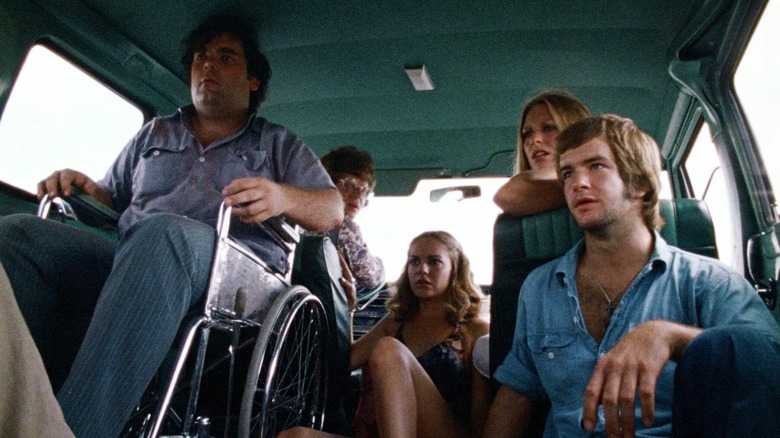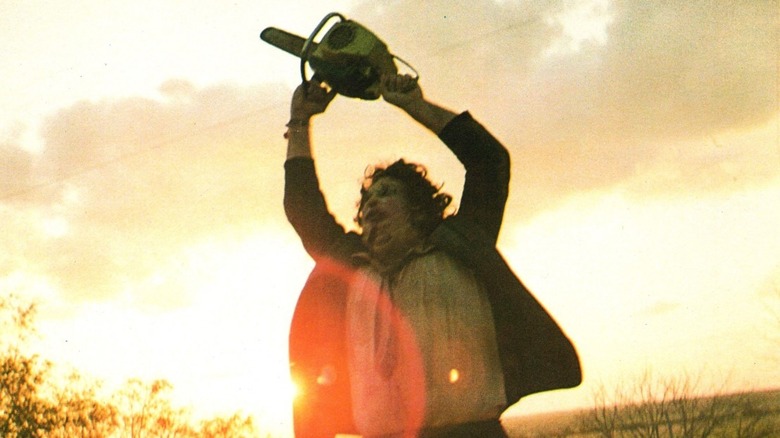The Texas Chain Saw Massacre's Bare-Bones Budget Meant Bringing Real Skeletons To Set
"The Texas Chain Saw Massacre" has become a multi-million dollar franchise, but the low-budget set of the original film was a total horror show. Some parts of the set were just as gory in real life as they were on screen. Cutting financial corners led the art department to make some crazy creative decisions, including using animal cadavers and real human bones.
The 1974 film was the slasher that started it all. The series now relies on digital effects and intricate prosthetics to achieve maximum gore, but the original movie was made in the days of practical effects. Moreover, the film was made with very little funds. "Texas Chain Saw" would change cinema forever, but it operated on a measly budget of $60,000, per Texas Monthly.
The production had a small budget, but the crew refused to sacrifice the quality of their props. Rather than use poor-quality plastic replicas that would read as false on screen, director Tobe Hooper and his art department went the non-traditional route when sourcing their materials. "Some of the skeletons were real," Hooper confirmed to Interview. "When he's impaled on the tombstone in the beginning. It's a real human skeleton underneath it."
But why would the production team use real human bones instead of a replica? The answer is actually rather simple. "That was a practical, budgetary thing," the director explained. "It was less expensive to get real human skeletons from India than to buy plastic reproductions."
Believe it or not, bones weren't even the grossest prop that made it into the film.
The props looked terrifying but they smelled even worse
Using real human bones gave "Texas Chain Saw Massacre" a realistic feel, but it came at a pretty disgusting cost. "You needed a lot more light back then to shoot a film. So the lights would cook the [bones]," Hooper recalled. When asked if the set was smelly as a result, the director replied, "Oh, it was."
An art department experiment contributed to the horrible smell on set. "Somebody thought about getting dead cats and dogs from the pound and using formaldehyde on them," the actress Marilyn Burns recalled to Terror Trap. "Everybody agreed that was a terrible idea. So they had to decide they'd burn them and give them a burial."
Between the cremation of animal corpses and human bones cooking under the lights, Burns felt that the olfactory assault suited the film's ambiance. "The smell of burning flesh just enhanced the feeling around the movie," she insisted. "It was awful." The chicken head from the film's iconic dinner scene created similar issues. "We just didn't formaldehyde that right," Burns admitted. "You know how chicken can smell ... imagine that in the lights, under the heat."
The dead weren't the only ones contributing to the stench. Gunnar Hansen, who played Leatherface, was also a source of the smell. "Gunnar, of course, smelled so bad because he had on that costume," Burns remembered. "He had to wear it for continuity ... no one could wash it. He couldn't stand himself after a while."
Despite — or maybe because of — the unsettling on set conditions, "Texas Chain Saw" exceeded all expectations and became a massive success. It redefined horror and the cinematic rating system itself. With just a few bones and a chicken head, it changed everything. Diamonds are made under pressure, right?

